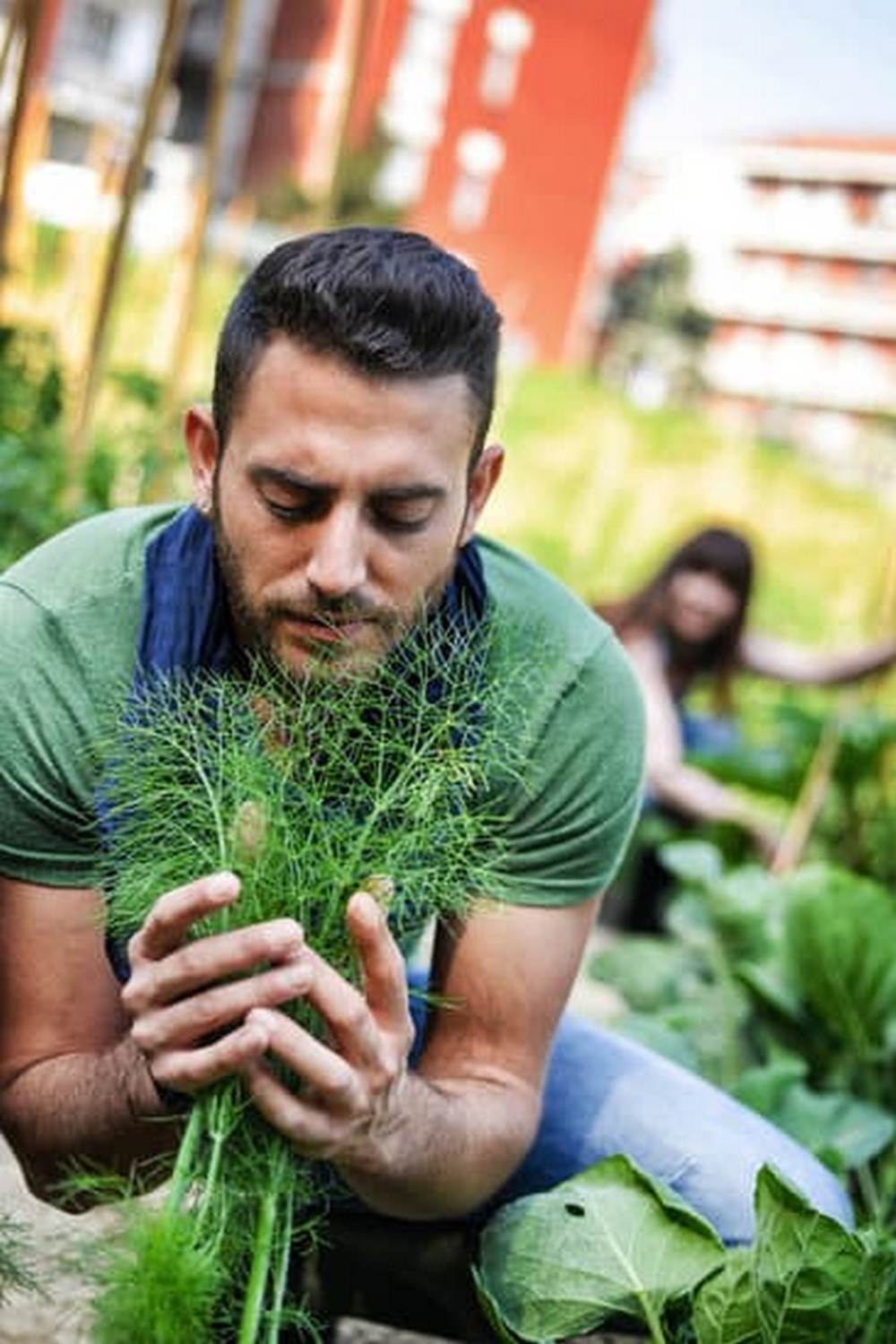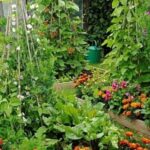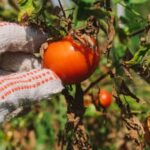Are you looking to start your own Malaysian vegetable gardening blog? Whether you’re a beginner or an experienced gardener, this article will provide you with valuable insights and tips on how to grow a successful vegetable garden in Malaysia. From the best vegetables to grow in the country to climate and soil considerations, as well as techniques and methods for a thriving garden, we have all the information you need to get started.
Malaysia’s tropical climate and diverse soil types make it an ideal location for growing a wide variety of vegetables. In this introductory section, we will explore the basics of Malaysian vegetable gardening, including the best vegetables to grow, climate and soil considerations, as well as tips for success. Whether you have a small balcony or a spacious backyard, there are options for every type of gardener in Malaysia.
Throughout this article, we will also delve into common pests and diseases that can affect Malaysian vegetable gardens, as well as techniques and methods that have been proven successful by experienced gardeners in the country. Additionally, we will feature an exclusive interview with a successful Malaysian vegetable gardener who will share their top tips and tricks for growing an abundant garden in Malaysia.
So if you’re ready to cultivate your very own Malaysian vegetable garden blog, read on for everything you need to know.
The Best Vegetables to Grow in Malaysia
Malaysia’s tropical climate and rich soil make it an ideal place for vegetable gardening. When it comes to choosing which vegetables to grow in Malaysia, there are several factors to consider such as the climate, soil type, and local preferences. Some vegetables thrive in the Malaysian climate and soil, making them ideal for both home and commercial gardening.
One of the best vegetables to grow in Malaysia is okra (also known as lady’s fingers). This vegetable is well-suited to the warm and humid conditions of Malaysia and can be grown throughout the year. It is a popular choice for Malaysian gardeners due to its versatility in cooking and high nutritional value.
Another great vegetable for Malaysian gardeners is kangkung (water spinach). Kangkung is a staple in Malaysian cuisine and grows well in both wet and dry soil conditions. It is easy to cultivate and can be harvested within a few weeks of planting, making it an excellent choice for beginners.
Additionally, long beans are also well-suited for growing in Malaysia. They thrive in hot climates and can tolerate various soil types, making them a resilient choice for Malaysian vegetable gardens. Long beans are not only delicious but also high-yielding, making them a practical option for those looking to produce a bountiful harvest.
| Vegetable | Best Growing Conditions |
|---|---|
| Okra (Lady’s Fingers) | Warm and humid conditions; Throughout the year |
| Kangkung (Water Spinach) | Grows well in wet or dry soil conditions; Quick harvest |
| Long Beans | Thrive in hot climates; Tolerant of various soil types; High-yielding |
Climate and Soil Considerations for Malaysian Vegetable Gardening
When it comes to vegetable gardening in Malaysia, one of the most important factors to consider is the climate and soil conditions. The tropical climate of Malaysia can be both a blessing and a challenge for vegetable gardeners. The country experiences high temperatures and heavy rainfall throughout the year, which can impact the success of a vegetable garden.
Climate Considerations
The hot and humid climate in Malaysia can be favorable for many vegetables, but it also presents challenges such as excessive heat and moisture. Certain vegetables may struggle to thrive in such conditions, while others may flourish. It is important for Malaysian vegetable gardeners to carefully select vegetables that are well-suited to the local climate.
Soil Considerations
In addition to the climate, soil quality plays a crucial role in the success of a vegetable garden. Malaysian gardeners should consider the type of soil on their property and make any necessary amendments to improve its fertility and drainage. Different vegetables have varying soil requirements, so it’s essential to choose vegetables that will thrive in the specific soil conditions present in your garden.
Adapting Techniques for Malaysian Climate
Given the unique climate and soil conditions in Malaysia, it’s important for vegetable gardeners to adapt their techniques accordingly. This may include using raised beds or containers to improve drainage, providing shade for delicate plants during extreme heat, and implementing sustainable watering practices to combat heavy rainfall. By understanding and addressing these specific considerations, Malaysian vegetable gardeners can increase their chances of successful crop cultivation.
Overall, while there are challenges when it comes to climate and soil considerations for Malaysian vegetable gardening, with careful planning and adaptation of techniques, it is possible to have a thriving vegetable garden in this tropical environment. For more information on how to navigate these considerations effectively, visit a reputable Malaysian vegetable gardening blog or seek advice from experienced local gardeners who have successfully overcome these challenges.
Tips for Successful Malaysian Vegetable Gardening
Choosing the Right Vegetables
When it comes to successful vegetable gardening in Malaysia, choosing the right vegetables to grow is crucial. Considering the tropical climate of the country, it is important to select vegetables that are well-suited for these conditions. Some of the best vegetables to grow in Malaysia include okra, long beans, eggplant, and kangkung. These vegetables thrive in the warm and humid climate of Malaysia and are relatively easy to cultivate.
Optimizing Watering and Drainage
One of the key factors in successful Malaysian vegetable gardening is proper watering and drainage. With the country’s tropical climate, frequent and consistent watering is essential for vegetable plants to thrive. It is important to monitor soil moisture levels and water your garden regularly, especially during dry periods. Additionally, ensuring good drainage is crucial to prevent waterlogging which can lead to root rot and other issues.
Utilizing Organic Pest Control Methods
In Malaysian vegetable gardening, dealing with pests can be a common challenge. However, using organic pest control methods can help protect your crops without harming the environment. Companion planting, using natural predators such as ladybugs and praying mantises, and making homemade organic insecticides are effective ways to manage pests in your garden. By practicing sustainable and eco-friendly pest control methods, you can ensure the health and productivity of your vegetable garden while minimizing harm to beneficial insects and wildlife.
By following these tips for successful Malaysian vegetable gardening, you can overcome common challenges posed by the tropical climate and enjoy a bountiful harvest of fresh produce from your own garden.
– End of Section –
Common Pests and Diseases in Malaysian Vegetable Gardens
Malaysia’s tropical climate provides an ideal environment for a wide variety of vegetables to thrive. However, along with the favorable conditions for growth, there are also various pests and diseases that can affect vegetable gardens in Malaysia. Understanding these common issues is crucial for successful Malaysian vegetable gardening.
One of the most common pests in Malaysian vegetable gardens is the caterpillar. These voracious eaters can quickly decimate leafy greens and other tender vegetables if left unchecked. Additionally, aphids and mites can also pose a threat to vegetable plants, sucking vital nutrients from the leaves and stems. It is important for gardeners to regularly inspect their plants for signs of pest infestation and take prompt action using natural or chemical methods to control them.
In addition to pests, Malaysian vegetable gardens may also be susceptible to various diseases such as powdery mildew, bacterial wilt, and fungal infections. These diseases can weaken or even kill plants if left untreated. To prevent these issues, it is essential for gardeners to practice good crop rotation, proper spacing between plants, and adequate ventilation to minimize the risk of disease development in their gardens.
As an aspiring Malaysian vegetable gardener, it is important to stay informed about these common pests and diseases through resources such as online forums, agricultural extension services, and reputable blogs like the “Malaysian Vegetable Gardening Blog.” By gaining knowledge about the potential threats to their crops, gardeners can take proactive measures to safeguard their vegetables and ensure a successful harvest.
Malaysian Vegetable Gardening Techniques and Methods
When it comes to vegetable gardening in Malaysia, there are several techniques and methods that can be employed to ensure a successful harvest. One popular method is the raised bed technique, which involves creating elevated soil beds to improve drainage and soil quality.
This is particularly useful in areas with heavy rainfall, as it prevents waterlogging and allows for better root development. Another common technique is companion planting, where compatible plants are grown together to maximize space and ward off pests naturally.
In addition to these techniques, many Malaysian vegetable gardeners also practice organic gardening methods. This involves using natural fertilizers and pesticides, as well as incorporating composting to improve soil fertility. Organic gardening not only produces healthier and more flavorful vegetables, but also helps maintain a balanced ecosystem in the garden.
Furthermore, hydroponic gardening has gained popularity in urban areas of Malaysia, where space for traditional gardens may be limited. This method involves growing plants without soil using a nutrient-rich water solution, providing an innovative solution for those with limited outdoor space.
Lastly, vertical gardening has become increasingly popular in Malaysia due to its space-saving nature. By growing vegetables vertically on trellises or in stacked containers, gardeners can make the most of limited space while also improving air circulation around the plants. These techniques and methods demonstrate the adaptability of Malaysian vegetable gardening practices to various environmental and spatial constraints.
| Techniques | Methods |
|---|---|
| Raised Bed Gardening | Companion Planting |
| Organic Gardening | Hydroponic Gardening |
| Vertical Gardening |
Interview With a Successful Malaysian Vegetable Gardener
I recently had the pleasure of interviewing Susan Tan, a successful Malaysian vegetable gardener who has been practicing this hobby for over 10 years. Here are some insights and tips she shared with me:
Tips for Beginners in Malaysian Vegetable Gardening
Susan emphasized the importance of starting small and gradually expanding your garden as you gain more experience. She recommended beginners to start with easy-to-grow vegetables such as leafy greens (e.g. spinach, lettuce) and herbs (e.g. basil, mint). She also stressed the significance of understanding the climate and soil conditions in Malaysia, noting that certain vegetables may thrive better in specific regions.
Common Challenges Faced by Malaysian Vegetable Gardeners
When asked about the common challenges faced by Malaysian vegetable gardeners, Susan mentioned dealing with pests such as aphids, caterpillars, and snails. She advised using natural pest control methods like neem oil or introducing beneficial insects like ladybugs to combat these issues. Additionally, she highlighted the importance of proper watering techniques and soil management to prevent diseases such as fungal infections.
Benefits of Joining a Malaysian Vegetable Gardening Community
Susan spoke passionately about the benefits of joining a local vegetable gardening community or forum. She noted that it provides a platform for sharing experiences, exchanging tips, and accessing valuable resources. She also highlighted how connecting with other like-minded individuals can foster a sense of camaraderie and encourage continuous learning and improvement in one’s gardening journey.
Overall, my interview with Susan Tan shed light on the practical aspects of successful vegetable gardening in Malaysia. Her insights will surely be invaluable to aspiring gardeners who are looking to embark on their own fruitful gardening journeys. For more inspirational stories and helpful tips on Malaysian vegetable gardening, check out our Malaysian Vegetable Gardening Blog
Resources for Malaysian Vegetable Gardeners
Are you looking for resources to help you with your Malaysian vegetable gardening journey? Look no further. Here are some valuable resources that can provide you with guidance, tips, and inspiration for your gardening endeavors:
- Malaysian Vegetable Gardening Blog: One of the best ways to stay up-to-date on the latest trends and techniques in Malaysian vegetable gardening is by following a reputable blog dedicated to this topic. A Malaysian vegetable gardening blog can offer valuable insights, tips for success, and even troubleshooting advice for common gardening issues. Consider subscribing to a blog run by experienced Malaysian gardeners who are passionate about sharing their knowledge and experiences.
- Local Gardening Associations: Joining a local gardening association can connect you with fellow gardeners who have experience growing vegetables in Malaysia’s unique climate and soil conditions. These associations often hold events, workshops, and seminars where you can learn from experienced gardeners and exchange valuable tips and tricks.
- Online Forums and Communities: Engaging with online forums and communities focused on Malaysian vegetable gardening can be an excellent way to seek advice, share your own experiences, and connect with like-minded individuals. From Facebook groups to specialized gardening forums, there’s a wealth of knowledge waiting for you at your fingertips.
By taking advantage of these resources, you can enhance your knowledge, improve your skills, and ultimately enjoy a more successful vegetable garden in Malaysia. Whether you’re a beginner or an experienced gardener, these resources can provide you with the support and inspiration needed to take your Malaysian vegetable garden to the next level.
Conclusion
In conclusion, the future of Malaysian vegetable gardening looks promising as more and more people are becoming interested in growing their own produce. With the rise of urban farming and sustainable living trends, there is a growing demand for information and resources on how to start and maintain a successful vegetable garden in Malaysia. The availability of online platforms such as the Malaysian Vegetable Gardening Blog provides valuable insights, tips, and techniques for both novice and experienced gardeners.
Additionally, as more research and development are focused on agricultural practices tailored to the Malaysian climate and soil conditions, we can expect even greater advancements in vegetable gardening methods. This will empower gardeners to overcome challenges related to weather, pests, diseases, and limited space in urban areas. The blog’s focus on climate and soil considerations for Malaysian vegetable gardening demonstrates a commitment to providing relevant information that can help gardeners adapt to local conditions.
Furthermore, the resources available for Malaysian vegetable gardeners have expanded significantly over the years. From community gardening initiatives to government-supported agricultural programs, there are numerous opportunities for individuals to engage in vegetable gardening.
The Malaysian Vegetable Gardening Blog serves as a centralized hub where enthusiasts can access a wealth of information including best practices, interviews with successful gardeners, and a comprehensive guide on common pests and diseases. As interest in organic farming and sustainable living continues to grow in Malaysia, it is clear that the future of vegetable gardening in the country is bright.
Frequently Asked Questions
What Is the Best Vegetable to Grow in Malaysia?
The best vegetable to grow in Malaysia depends on the climate and soil of the specific region. However, popular options include okra, long beans, eggplant, and cucumbers due to their ability to thrive in the tropical climate.
How to Start a Vegetable Garden Malaysia?
To start a vegetable garden in Malaysia, it’s essential to consider the local climate and soil conditions. Begin by choosing a suitable location with access to sunlight, then prepare the soil, select vegetable varieties suited for the climate, and ensure proper watering and maintenance.
Can You Grow Spinach in Malaysia?
Spinach can be grown in Malaysia, but it requires specific care due to the warm and humid climate. It is best to plant spinach during the cooler months or in shaded areas to protect it from intense sunlight. Additionally, providing adequate water and nutrients is crucial for successful spinach cultivation.

If you’re looking to get into vegetable gardening, or are just looking for some tips on how to make your current garden better, then you’ve come to the right place! My name is Ethel and I have been gardening for years. In this blog, I’m going to share with you some of my best tips on how to create a successful vegetable garden.





